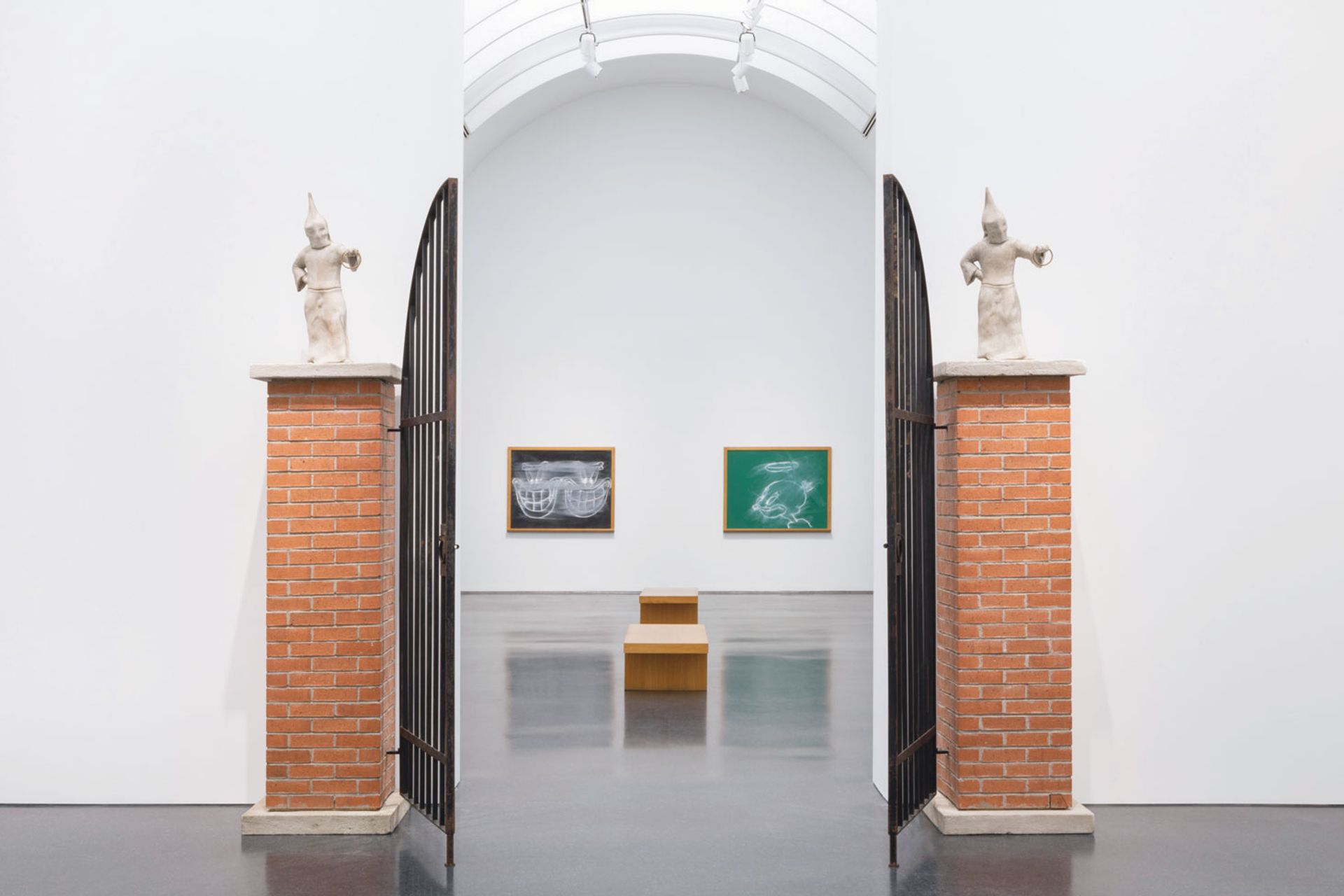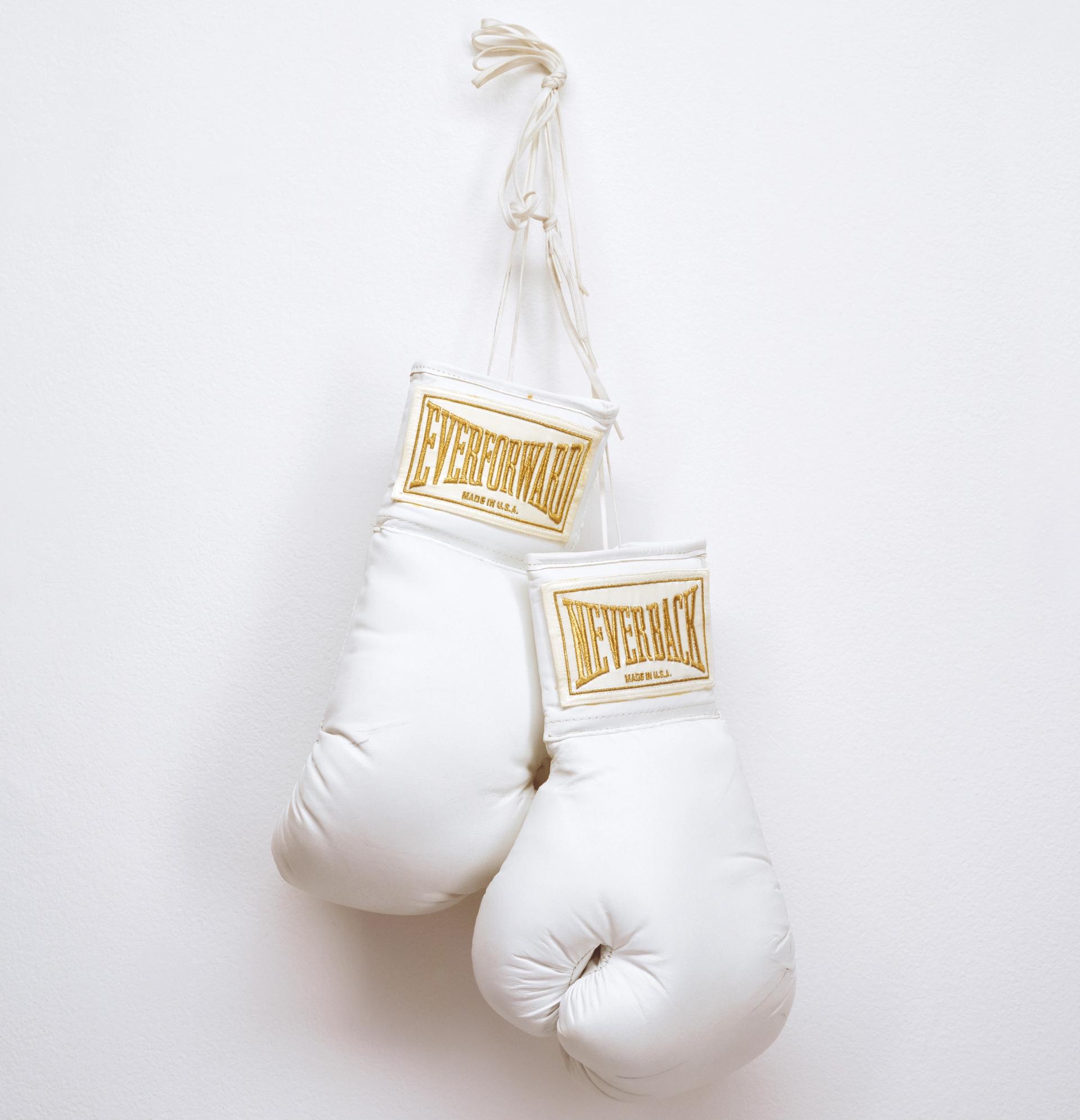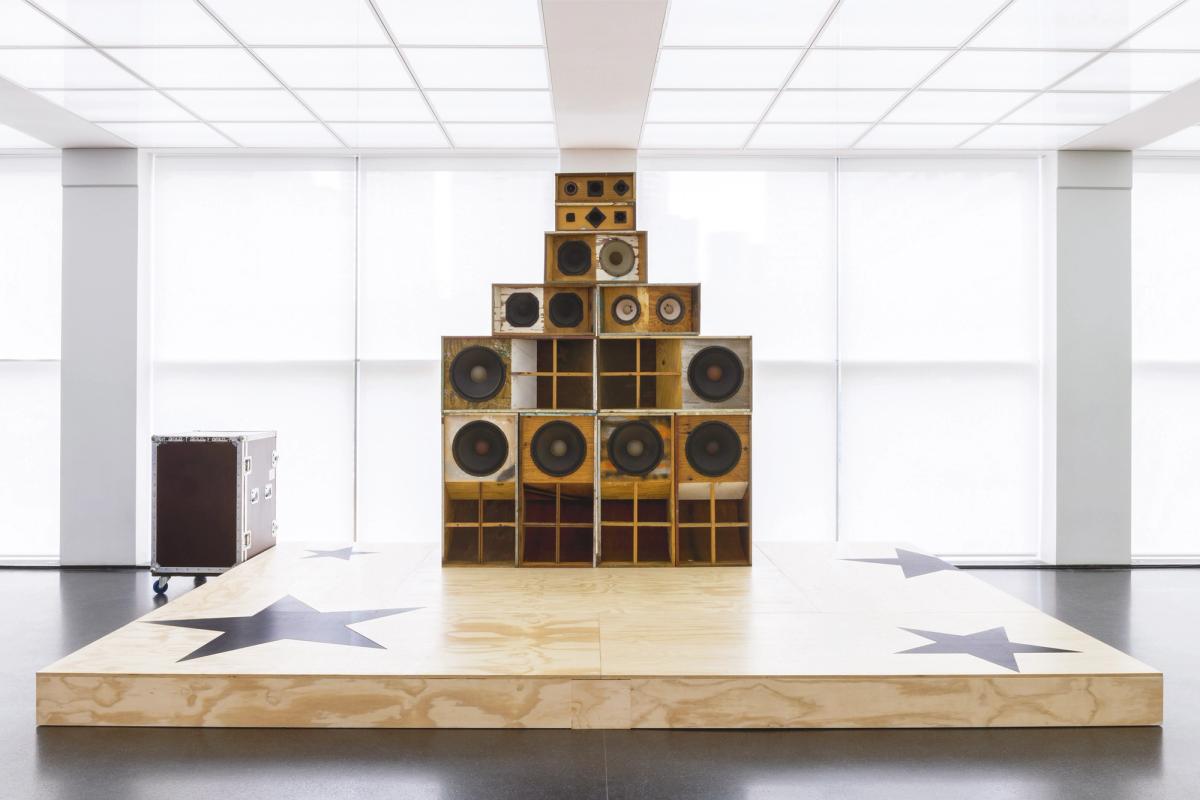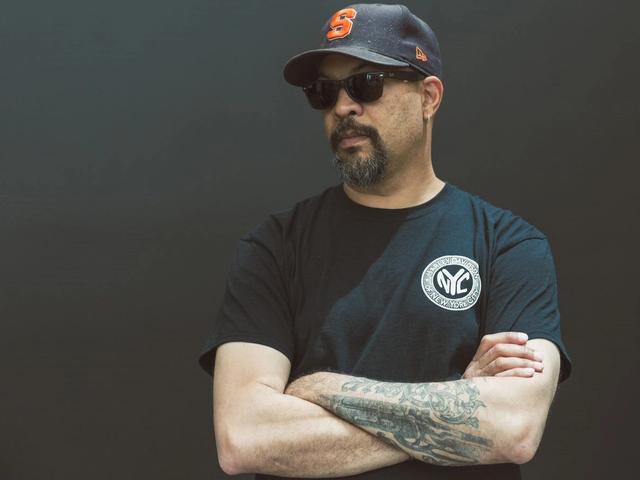For more than 30 years, the US artist Gary Simmons has examined the histories of racism as reflected in multiple aspects of American culture, from cinema to sport, creating an arresting body of work that includes large-scale “erasure” paintings, sculptures and video. From the beginning, Simmons’s work has been in alignment with conceptualism and produced with impeccable skill. In the survey exhibition, Gary Simmons: Public Enemy, it is clear that Simmons’s work remains more than up to the task of exposing and challenging persistent injustice at a time when we need it most. While all that is necessary, so is delight—and we get that here too.
Simmons—a native New Yorker with West Indian roots who is now based in Los Angeles—attended the School of Visual Arts in New York. He graduated in 1988, then moved west to study at the California Institute of the Arts. As well as making sculptural objects, he also began developing his erasure paintings after coming across a stash of chalkboards that were being stored in his first studio in a decommissioned school. As a surface for learning, the chalkboard inspired a number of ideas and techniques that led Simmons to create the monumental and energetic wall paintings that he is perhaps best known for: covering large surfaces with blackboard paint before going through countless pairs of gloves to blur the image or text he had so carefully created. In the smaller, earlier works, Simmons borrowed imagery from racist cartoons and then attempted to erase the drawings, leaving behind ghostly traces and blurry remains. His signature technique remains fresh and the themes remain horribly relevant.
Missing bodies, empty spaces, invisibility ... the work may seem simple, but the ideas are not
Public Enemy, borrowing its name from the American hip-hop group, presents examples of Simmons’s early work along with more recent drawings of cartoons. Of the large-scale pieces on display, two will be acquired by the Museum of Contemporary Art (MCA) Chicago for its permanent collection. One of these is Reflection of a Future Past (2006), a pigment and oil on panel showing a doubled image of the skeletal remains of a 1964 World’s Fair pavilion in New York set against a vibrant blue background. René Morales, who co-curated the show with Jadine Collingwood and Jack Schneider, conceived the show when he was working for the Pérez Art Museum Miami—where the show will travel to in December—and brought the plans with him when he joined the curatorial staff of the MCA Chicago in 2022.
Gary Simmons's Let Me Introduce Myself (2020) The Vichie Collection
In the glass-walled atrium leading to the main galleries is Recapturing the Memories of the Black Ark (2014-ongoing), named after Lee “Scratch” Perry’s recording studio in Jamaica where the early dub reggae sound was born. The work is a movable wood stage backed by an assemblage of PA speakers that was first created in 2014 for the Prospect triennial in New Orleans from reclaimed materials and served as a set for live performances around the city. It will do the same in Chicago.
The exhibition contains early sculptural works such as Everlast Champion (1991), a series of gold-plated athletic shoes, and Lineup (1993), where an oversized police height chart is the backdrop for eight pairs of gold-plated trainers placed on the floor. The connection between sports shoes and Black culture cannot be understated. Missing bodies, empty spaces, invisibility—Simmons effectively layers themes in his practice. The work may seem simple, but the ideas are not.
In Six-X (2002, a replica of the 1989 original), half a dozen child-sized Klan outfits hang from a metal rack with their corresponding white dunce caps on a shelf above, while nearby, Klan Gate (1992), made from two big brick columns supporting arched metal gates and topped with Klan figures, flanks the opening into the next gallery as if it were an entrance to a Hogwarts-like school for racism. Simmons’s interest in pedagogy is addressed in other works such as Disinformation Supremacy Board (1989), which is comprised of five wooden school desks facing narrow slivers of white board with white chalk and no room to accommodate the words that we could never see anyway.

Interior view of Gary Simmons: Public Enemy showing Klan Gate (1992) Photo: Shelby Ragsdale; © MCA Chicago
At the midpoint of the show is a reading room where, at the time of my visit, four visitors were seated and deeply engrossed in books pulled from nearby shelves. Many of the publications were chosen by Simmons and feature topics that have informed his work, from the architecture in Alfred Hitchcock films to the classic 1896 science fiction novel The Island of Doctor Moreau by H.G. Wells. An anthology on critical race theory, centred eye-level on a shelf, seemed a proudly defiant location given the current attacks from the far right in the US on education, libraries and the teaching of Black history.
A brush with... Gary Simmons
Simmons’s examination of identity extends to the concept of “white trash”—a slur that disenfranchises poor white people—in two pieces on display. In Untitled (2001), a moonshine distiller, completely covered in white latex enamel, is placed near Here, Piggy Piggy (2001), two giant bobbleheads referencing the 1972 film Deliverance, where businessmen from Atlanta have a notorious encounter with “hillbillies”—another derogatory stereotype. With these pieces, the artist introduces a broader conversation about class.
My first encounter with Simmons’s work in 2001 was a powerful one. As the artist-in-residence for the Site Santa Fe museum, he created Ghost House, a series of erasure paintings in an abandoned house situated on a remote 25,000-acre ranch in the New Mexico grasslands. It was so quiet, there were traces of shooting stars in the sky and it felt holy. The experience of being in this quite opposite environment at the MCA Chicago is nonetheless similar. With the arc of the moral universe on such a seemingly long detour on its bend towards justice, how is that possible?
Maybe it is the hope that as this disquieting subject matter continues to be exposed to the sunlight, we will finally be willing to find a cure. In the introductory catalogue essay, Morales writes about how Simmons’s work addresses the need for continued resistance, adding that “it is only through this healing of our collective memory that we may yet find a way to use the power of the past not for the subjugation of the Other, but as the key to collective liberation”.
See this show. Then go home, put on Public Enemy’s 1989 song Fight the Power, and get energised.
- Gary Simmons: Public Enemy, Museum of Contemporary Art Chicago, until 1 October
- Curators: René Morales, Jadine Collingwood and Jack Schneider
- Listen to our recent interview with Gary Simmons on the A brush with... podcast

Simmons’s Everforward... (1993) Courtesy of Walker Art Center, Minneapolis



